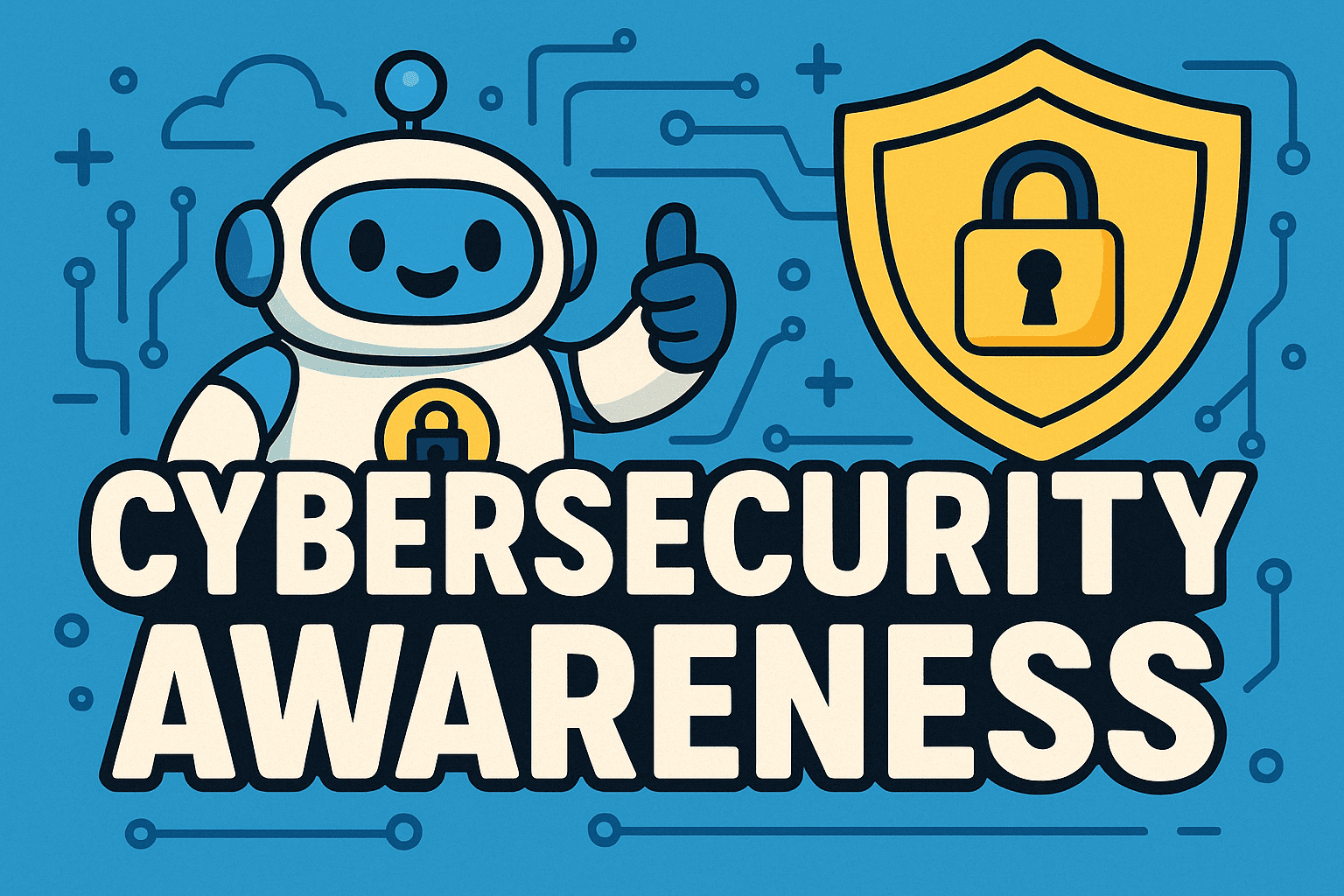Updated on September 26, 2025, by OpenEDR
How prepared is your team to recognize and respond to cyber threats? A recent report revealed that 82% of data breaches involve human error, highlighting the urgent need for cybersecurity awareness across all industries.
Introduction: Why Cybersecurity Awareness Matters
It’s not just IT managers who need to worry—employees at every level, from frontline staff to C-level executives, play a critical role in protecting company assets. With phishing, ransomware, and insider threats on the rise, cybersecurity awareness must become part of your company’s culture.
In this comprehensive guide, we’ll explore the importance of cybersecurity awareness, common mistakes businesses make, and proven strategies to build a security-first mindset in your organization.
1. What Is Cybersecurity Awareness?
Cybersecurity awareness is more than knowing about cyber risks—it’s the ability to recognize threats and take the right steps to avoid them.
It includes understanding:
How hackers exploit human behavior.
The importance of strong passwords and safe browsing habits.
The need for vigilance against phishing and social engineering.
Company policies for secure data handling.
Think of it as a human firewall—your employees becoming the first line of defense.
2. Why Businesses Must Prioritize Cybersecurity Awareness
Cyberattacks don’t just cost money—they erode trust, disrupt operations, and in some cases, shut businesses down. For example:
The average cost of a data breach in 2024 reached $4.45 million.
Small businesses often never fully recover from a ransomware attack.
Compliance violations from poor security awareness can lead to hefty fines.
When employees understand the cybersecurity best practices, they are less likely to fall victim to scams, minimizing risks before they escalate.
3. Common Cybersecurity Mistakes Employees Make
Even well-meaning employees can expose organizations to risk. Some frequent mistakes include:
Clicking on suspicious links in emails.
Using weak or reused passwords.
Ignoring software update notifications.
Uploading sensitive data to unauthorized cloud platforms.
Failing to report suspicious activity quickly.
Recognizing these pitfalls is the first step toward improving security awareness training.
4. Building a Cybersecurity Awareness Program
A successful awareness program requires consistency, engagement, and leadership support. Here are the key steps:
Step 1: Assess Current Knowledge
Conduct baseline assessments or simulated phishing campaigns to gauge employee awareness.
Step 2: Develop Engaging Training Content
Use real-world examples of breaches.
Offer interactive workshops and quizzes.
Deliver training in small, digestible modules.
Step 3: Reinforce Continuously
Cyber threats evolve, so training must be ongoing—not a once-a-year event.
Step 4: Measure Progress
Track improvements in phishing test results, incident reporting, and compliance scores.
5. Key Topics to Cover in Cybersecurity Awareness Training
Your training should go beyond theory and focus on practical skills. Cover these essential areas:
Phishing Awareness: Spotting fake emails, texts, and phone calls.
Password Hygiene: Using strong, unique credentials and password managers.
Social Engineering Defense: Recognizing manipulation tactics.
Safe Remote Work Practices: Securing home networks and devices.
Data Handling: Following company policies for sensitive information.
Incident Reporting: Knowing when and how to escalate concerns.
6. Role of Leadership in Cybersecurity Awareness
Culture flows from the top. CEOs and managers must lead by example:
Follow the same security protocols as employees.
Communicate openly about risks and lessons learned.
Reward staff for reporting suspicious activity.
Allocate resources for continuous improvement.
When leaders demonstrate commitment, employees are more likely to embrace security practices.
7. Using Technology to Enhance Cybersecurity Awareness
While training focuses on people, technology plays a crucial supporting role.
Endpoint protection ensures devices are monitored and secured.
Email filtering systems reduce exposure to phishing attacks.
Security Information and Event Management (SIEM) tools provide real-time alerts.
Zero Trust frameworks enforce least-privilege access.
Pairing strong security tools with employee training creates a resilient defense system.
8. Best Practices for Sustaining Cybersecurity Awareness
To ensure long-term success, businesses should adopt these practices:
Integrate cybersecurity messages into onboarding.
Use gamification to make learning fun and memorable.
Share monthly threat updates or “security tip of the week.”
Encourage open discussions about mistakes without blame.
Align awareness training with compliance frameworks like GDPR, HIPAA, or PCI DSS.
Consistency transforms awareness into behavior.
Cybersecurity Awareness Checklist
✅ Conduct regular phishing simulations
✅ Train staff on passwords, phishing, and social engineering
✅ Reinforce security protocols continuously
✅ Provide leadership support and resources
✅ Integrate awareness into daily workflows
✅ Pair human training with advanced security tools
FAQs on Cybersecurity Awareness
1. How often should cybersecurity awareness training be conducted?
At least quarterly, with refresher modules monthly, to keep employees updated on evolving threats.
2. Is cybersecurity awareness only for IT staff?
No. Every employee, from entry-level to executives, must understand their role in protecting company data.
3. What’s the most effective way to teach cybersecurity awareness?
Interactive, scenario-based training paired with real-world phishing simulations tends to be most effective.
4. How can small businesses improve cybersecurity awareness on a budget?
They can use free phishing simulation tools, provide basic password training, and encourage employees to follow security blogs.
5. Does cybersecurity awareness really reduce data breaches?
Yes. Studies show organizations with active training programs reduce successful phishing attacks by up to 70%.
Final Thoughts
Cybersecurity awareness is not a one-time project—it’s a cultural shift. By investing in employee training, leveraging technology, and fostering leadership support, businesses can drastically reduce their risk of cyber incidents.
The most secure organizations are those where awareness is as important as firewalls and antivirus software.
🚀 Ready to strengthen your organization’s cybersecurity posture?
Register for Xcitium’s OpenEDR platform today and gain the tools you need for advanced detection, protection, and response.
